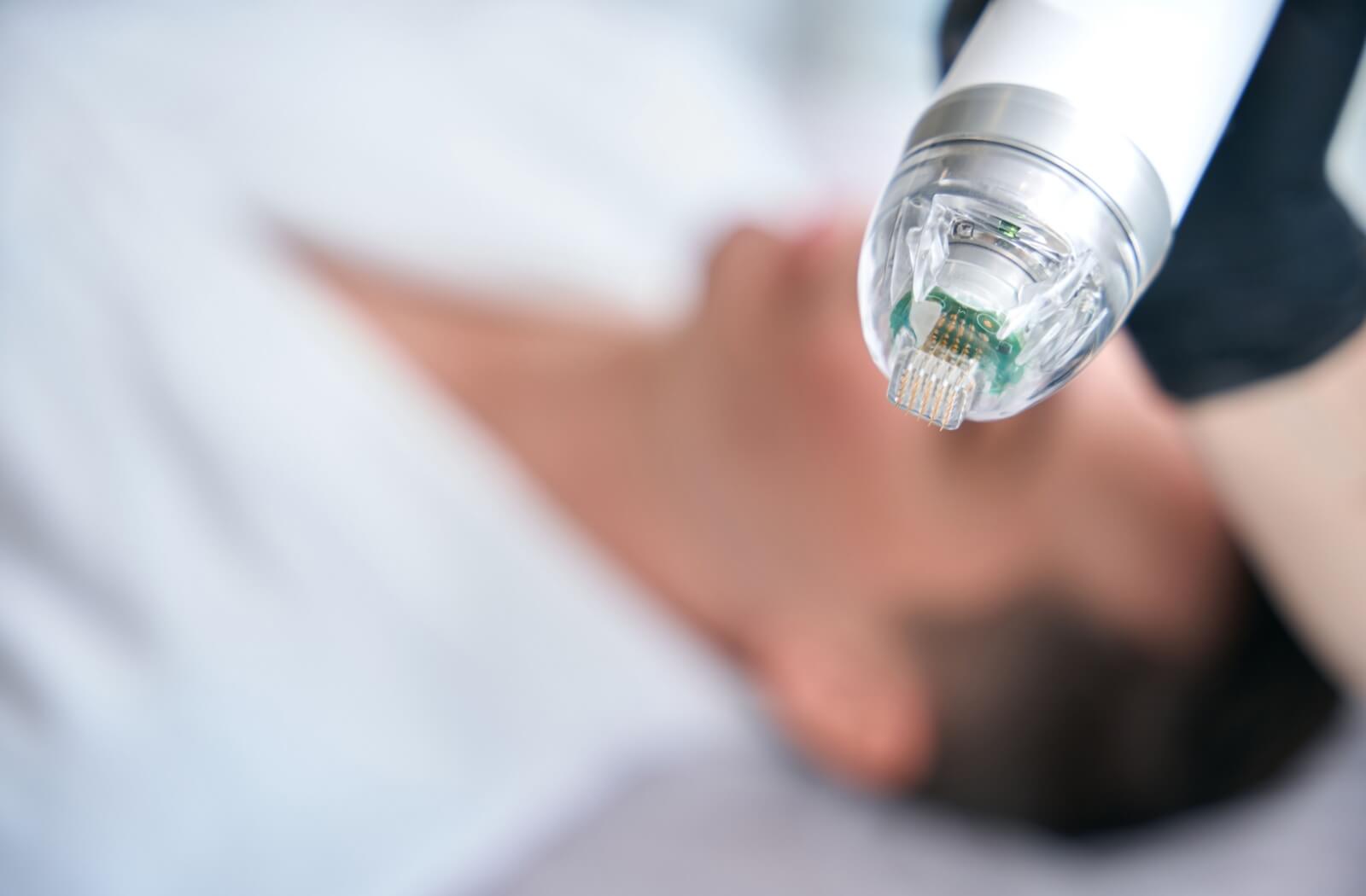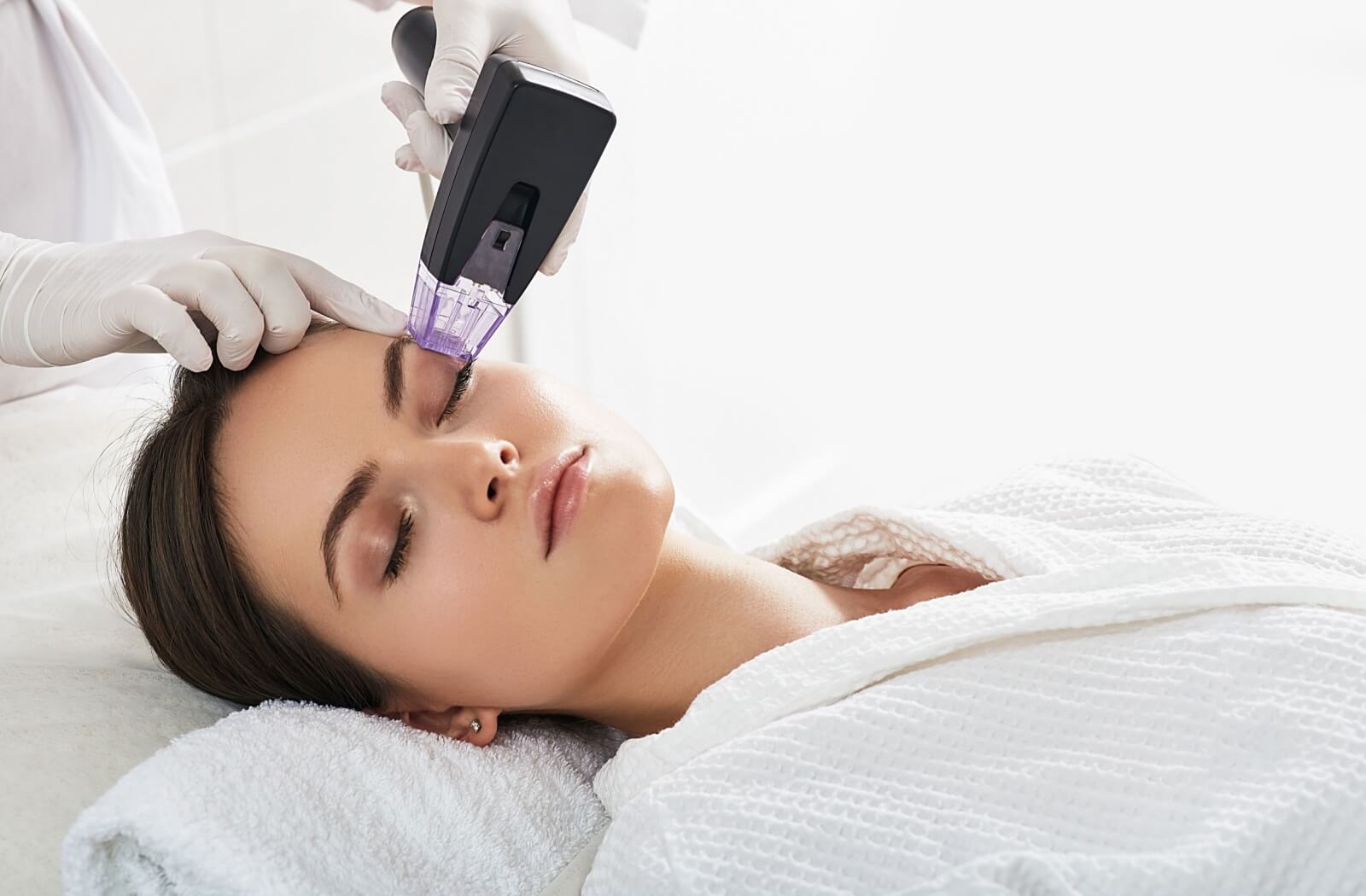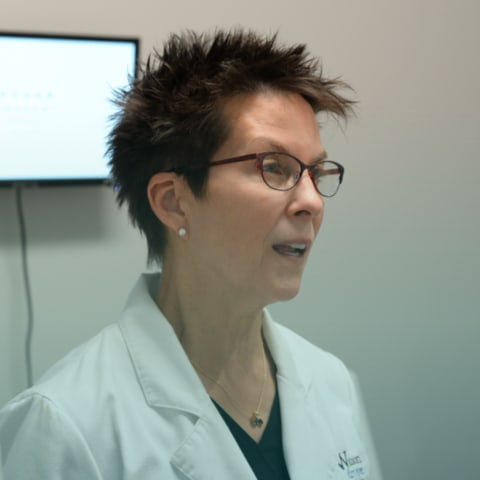Dry eyes may not appear to be a serious eye condition but it can negatively impact your quality of life, and if left untreated can lead to further eye complications. Fortunately, dry eyes can be managed and treated with several options, from advanced therapies to home remedies.
Radiofrequency treatment is an advanced therapy for dry eyes that uses heat to stimulate oil glands along the eyelid, promoting oil production to lubricate the eyes, and alleviating dryness.
What is Dry Eye Disease?
Dry eye disease (DES) is a chronic eye condition that impacts about 16 million Americans. This condition describes the dry, gritty, and irritating sensation experienced when the eyes do not produce sufficient tears or when tears evaporate too quickly.
There are two main types of dry eyes, each with distinct causes:
- Aqueous-Tear Deficient Dry Eye (ADDE): This type occurs when the tear glands fail to produce enough tear fluid, leading to inadequate lubrication and moisture. ADDE accounts for about 10% of dry eye cases and is often linked to autoimmune conditions.
- Evaporative Dry Eye (EDE): Most dry eye cases are due to EDE, which happens when tears evaporate too rapidly because of an unstable tear film.
Identifying the type of dry eye is important for developing effective treatment and management plans to alleviate dry eyes.
Common symptoms of DES include:
- Blurry vision
- Burning or stinging sensation
- Frequent blinking
- Light sensitivity
- Redness
- Watery eyes
Living with dry eyes can significantly affect your quality of life. Daily activities like reading, computer work, or even driving can become challenging.
Common causes of DES include:
- Meibomian Gland Dysfunction (MGD): The most common cause of EDE, MGD occurs when the oil glands along the eyelid become clogged, reducing oil secretion necessary to prevent tear evaporation.
- Environmental Factors: Dry and windy climates, prolonged screen exposure, and dehydration can increase tear evaporation risk.
If left untreated, dry eyes can lead to complications such as eye inflammation, abrasion of the corneal surface, and vision loss. Despite the chronic nature of DES, symptoms can be managed. From advanced therapies like radiofrequency treatments to at-home remedies, you can enjoy improved ocular health and visual clarity!
What is Radiofrequency Treatment?
Radiofrequency (RF) is a gentle, non-invasive, and FDA-cleared procedure that can be used to treat chronic dry eyes. RF therapy is particularly effective for individuals with meibomian gland dysfunction (MGD) and weak eyelid muscles that leave the surface of the eye exposed while we sleep.
RF technology uses safe levels of low-frequency electromagnetic waves to generate heat, penetrating layers of the skin. This heat helps stimulate meibomian glands and tighten the eyelids. RF treatment helps by unclogging these glands and promoting the secretion of oil to lubricate the eyes, thereby improving the stability of the tear film, and alleviating dry eye symptoms especially when you first wake up in the morning.
Your eye doctor will determine how many sessions of RF are required to alleviate dry eyes based on your ocular health and the severity of dryness. After 3-4 sessions, you may feel improvement in your dry eye symptoms.
There are several benefits to opting for RF treatment for dry eyes:
- Non-Invasive: Unlike surgical options for dry eye relief, RF therapy is non-invasive and involves minimal discomfort.
- Improves Skin: RF enhances the appearance of skin around the eyes. The heat generated by this device helps stimulate cellular turnover, collagen, and elastic production in the skin, resulting in a natural, youthful-looking appearance.
- Quick Recovery: The non-invasive nature of this treatment means there’s little to no downtime after the procedure. Patients can resume normal activities after their session!
- Long-Lasting Results: Many patients experience significant improvement in their symptoms for several months following the treatment.
- Combined with At-Home Therapies: RF is safe to use alongside at-home remedies for dry eyes including artificial tears, warm compress, and lifestyle changes like having a humidifier, drinking more water, and reducing screen exposure. These methods can help maintain the benefits of the RF treatment and provide additional relief from dry eye symptoms.

What to Expect During Your Radiofrequency Treatment
To help provide some insight into what your RF session may look like, we’ve broken down the experience.
Before the Procedure
The first step in your RF treatment journey is an initial consultation with your eye doctor. During this visit, your eye care professional will pay close attention to what you tell them is bothering you most about your eyes. Then they will assess the kind of dry eye you may have as well as the severity of your disease and its impact on your eyesight.
At this consult your eye doctor will determine the most suitable treatment plan for your dry eyes, which will include the duration of your RF treatment and any additional
Before your session, avoid facial skin treatments like chemical peels or laser treatments, keep yourself hydrated by drinking plenty of water, and avoid wearing makeup to your session.
At Your Session
On the day of your treatment, you’ll be made comfortable in a reclining chair. Your eye doctor will apply a soothing gel to your eyelids to provide sufficient delivery of the RF energy.
A handheld device distributes the RF energy to the targeted areas around the eyes. The procedure is gentle but you may feel some pressure around the eyes. Pressure is applied to confirm any blockage of the oil glands is removed.
The procedure typically lasts around 20-30 minutes
Post-procedure Care
The gentle and non-invasive approach to the session means you can continue your daily activities after the procedure! Drink plenty of water, use sun protection for the rest of the week, and use face creams to keep your skin moisturized.
After the procedure, it’s normal to feel some tenderness, swelling, warmth, and redness around the eyes for a few days. Avoid rubbing the skin of the targeted areas, gently wash your face, and continue with your skincare (but avoid using retinoids for at least a week, and avoid chemical peels and laser treatments for 3-4 weeks!).
Following up with your eye doctor is an important part of post-care after your session. Regular follow-up visits will be scheduled to monitor your progress and determine if additional sessions are needed.
Schedule a Consult
At first glance, dry eyes may not seem like a serious condition but they have the potential to cause significant discomfort and impact your quality of life. Fortunately, advanced therapy options like radiofrequency treatments provide lasting relief from dry eyes. Connect with our team at Watson Dry Eye Center to schedule an appointment for your dry eye disease consult and see if RF can help.

























